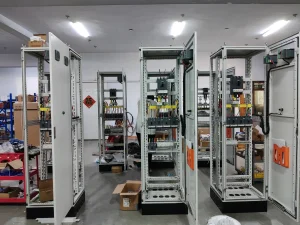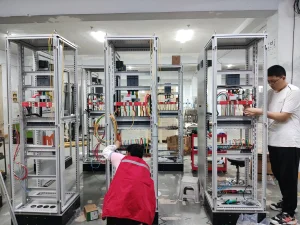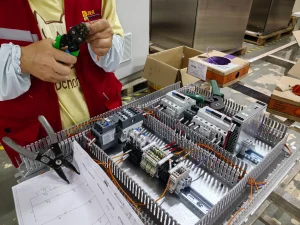In the modern world, electrical systems are critical for almost every business operation. However, improper protection and management of electrical components can lead to costly downtime, maintenance, and even safety risks. Electrical cabinets are the ultimate solution to ensure safe, reliable, and efficient power distribution across various industries.
An electrical cabinet is a protective enclosure designed to house electrical components, such as circuit breakers, PDUs, and junction boxes. It safeguards electrical equipment from environmental factors, providing corrosion resistance, dust protection, and ensuring safety for indoor and outdoor applications. These cabinets are essential for managing power systems efficiently and reliably.

When we talk about an electrical cabinet, we’re referring to a cabinet structure specifically designed to house electrical components. These components often include circuit breakers, contactors, and electrical controls that keep your systems running efficiently. Electric cabinets come in a range of sizes, from small junction box enclosures to large free-standing units that can accommodate numerous electrical and electronic devices. Whether you’re dealing with power distribution or telecommunication equipment, the fundamental purpose remains the same: provide protection from dust and moisture, mechanical impact, and unauthorized access.
An electrical enclosure, on the other hand, is a broader term. Electrical enclosures are designed to protect various electrical and electronic components from environmental conditions like rain, snow, heat, or corrosive chemicals. According to the National Electrical Manufacturers Association (NEMA standards), different enclosures are classified based on their ability to keep out water, dust, and prevent tampering with live electrical parts. By adhering to these standards, manufacturers ensure that their enclosures are made to the highest safety metrics. In many industrial environments, these industrial enclosures must be highly durable and feature proper ventilation to keep electronic equipment cool.
Electrical cabinets are essential for outdoor electrical installations where exposure to the environment can damage sensitive equipment. Cabinets designed for outdoor use are built to withstand harsh conditions, including rain, wind, and extreme temperatures.

Ensuring Proper Ventilation
Fans, louvers, and cooling units can be integral to your electrical cabinet design, ensuring components do not overheat. Heat dissipation is critical in industrial enclosures housing delivering large amounts of power distribution or continuous operation PLCs. Depending on your environmental constraints, passive cooling (vents) or active cooling (air conditioners) might be appropriate. Proper ventilation also prevents condensation and subsequent corrosion on metal materials or circuit boards.
Lockable and Tamper-Resistant Mechanisms
For ultimate security, a lockable door is critical. This approach prevents unauthorized access to live electrical parts. Many cabinets have a secure hinged cover with integrated latches, providing multiple layers of safety.

The Plastic and Fiberglass Frontier
Non-metallic enclosures such as fiberglass or polycarbonate are typically used for certain harsh environments or where corrosive chemicals could degrade metal. These materials offer lighter weight and can be made ul listed if they pass flame and impact tests. If corrosion resistance is paramount, consider a plastic or composite design.
As technology advances, electrical cabinet design continues to evolve. Future trends include:
These innovations aim to improve the efficiency and sustainability of electrical cabinets while meeting the growing demands of industries worldwide.
Tel: +86-186-6162-7561
Qiyang Road, Gumiao Industrial Park, Chengyang District, Qingdao City, Shandong Province